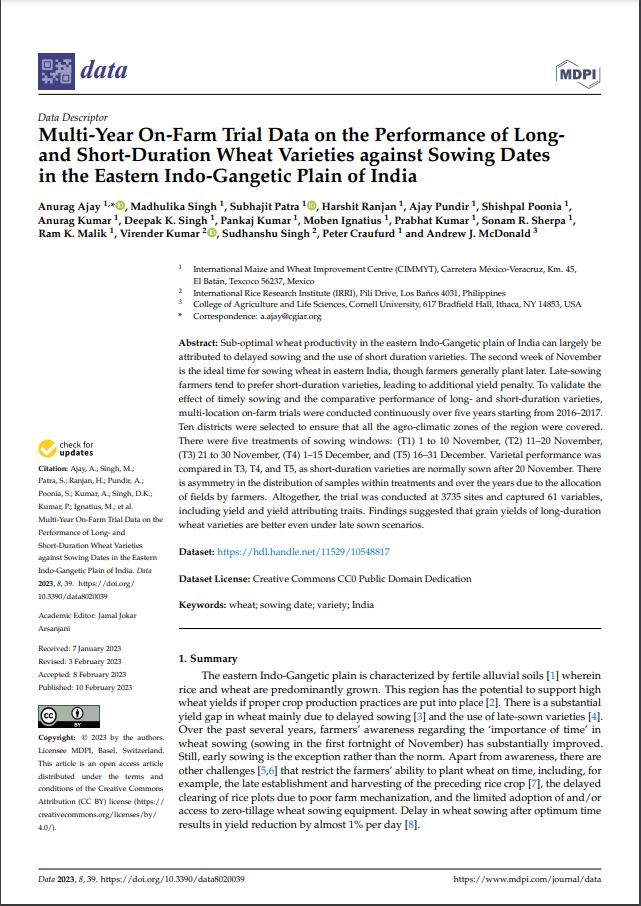Sub-optimal wheat productivity in the eastern Indo-Gangetic plain of India can largely be attributed to delayed sowing and the use of short duration varieties. The second week of November is the ideal time for sowing wheat in eastern India, though farmers generally plant later. Late-sowing farmers tend to prefer short-duration varieties, leading to additional yield penalty. To validate the effect of timely sowing and the comparative performance of long- and short-duration varieties, multi-location on-farm trials were conducted continuously over five years starting from 2016–2017. Ten districts were selected to ensure that all the agro-climatic zones of the region were covered. There were five treatments of sowing windows: (T1) 1 to 10 November, (T2) 11–20 November, (T3) 21 to 30 November, (T4) 1–15 December, and (T5) 16–31 December. Varietal performance was compared in T3, T4, and T5, as short-duration varieties are normally sown after 20 November. There is asymmetry in the distribution of samples within treatments and over the years due to the allocation of fields by farmers. Altogether, the trial was conducted at 3735 sites and captured 61 variables, including yield and yield attributing traits. Findings suggested that grain yields of long-duration wheat varieties are better even under late sown scenarios. Dataset: https://hdl.handle.net/11529/10548817 Dataset License: Creative Commons CC0 Public Domain Dedication.

